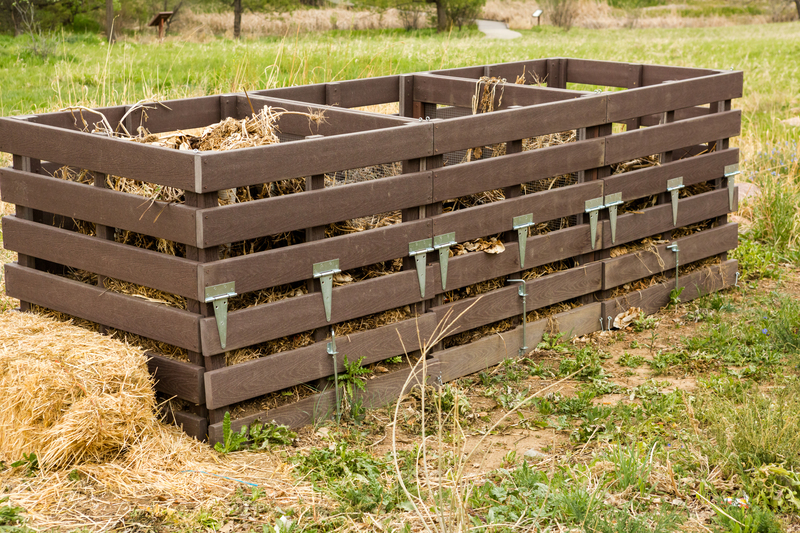The Construction Site Champion: A Builder's Skip
When you walk past a construction site, you'll almost always spot a bright, heavy-duty container at the heart of the action. That's a builder's skip--the unsung hero and trusted companion for professionals and homeowners alike. Efficient waste management, enhanced site safety, and environmental responsibility all revolve around this robust container. Welcome to an insightful journey into why a builder's skip is the construction site champion.

Understanding the Builder's Skip: What Is It?
A builder's skip is a large open-topped container, specifically designed for storing and transporting waste materials generated at construction sites. They're known for their durability, adaptability, and impressive capacity, making them ideal for the unique needs of builders and contractors.
Key Features of a Builder's Skip
- Size: Typically ranges from 6 to 12 cubic yards, although custom options exist
- Material: Manufactured using high-grade, rust-resistant steel
- Design: Open-topped for easy loading, sometimes with drop-down doors for accessibility
- Robustness: Engineered to endure heavy, sharp, or bulky waste
- Mobility: Delivered and collected by skip lorries
The builder's skip is distinct from smaller household skips due to its strength and volume, both of which are tailored to construction environments.
The Role of Builder's Skips on Construction Sites
Why is the builder's skip a mainstay on construction sites? Here are the main roles it plays:
Efficient Waste Management
One of the biggest challenges in any construction project is managing the vast array of waste produced. From bricks and concrete to timber and insulation, keeping the site clean and organized is paramount--and that's where builder's skips shine.
- Centralized Waste Collection: All site waste is contained in one secure location, reducing mess and clutter.
- Streamlined Removal: Once filled, skips are collected and emptied by professional waste carriers, saving time and labour.
- Categorized Disposal: Some sites use multiple skips to segregate materials for recycling, which supports sustainability.
Improved Safety
Site safety is a top priority. Debris and leftover materials can create tripping hazards and other risks. By providing a designated spot for waste, builder's skips keep pathways clear and the site compliant with safety regulations.
- Prevention of Accidents: Loose debris is removed from areas where workers operate machinery or move materials.
- Fire Hazard Minimization: Flammable waste is kept under control to prevent potential fires.
- Regulatory Compliance: Health and Safety Executive (HSE) guidelines recommend proper waste management, which skips help enforce.
Environmental Responsibility
Modern construction is under increasing pressure to minimize environmental impact. Builder's skips promote responsible waste segregation and ensure materials are sent for proper recycling or disposal.
- Recycling Capability: Metals, plastics, and brickwork are sorted and processed for reuse.
- Reduced Landfill: Centralized waste collection helps decrease the volume of waste destined for landfill sites.
- Compliance: Many regions now require proof of responsible disposal, which is simplified by using skips and licensed waste carriers.
Varieties of Builder's Skips: Choosing the Right One
Not all construction projects are the same, and neither are builder's skips. Selecting the appropriate skip ensures efficiency and cost-effectiveness throughout your build.
The Most Common Types
- Mini Skips (2-4 cubic yards): Ideal for small-scale renovations or jobs with limited waste.
- Midi Skips (4-6 cubic yards): Popular for kitchen or bathroom refits and modest site clearances.
- Builder's Skips (6-8 cubic yards): The default choice for most construction sites; capable of handling heavy waste like soil, rubble, and bricks.
- Large Skips (10-12+ cubic yards): Best for major projects, commercial sites, or when bulky non-heavy materials are involved.
Factors to Consider When Hiring a Builder's Skip
- Volume of Waste: Assess the scope of your project to determine the appropriate skip size.
- Type of Waste: Is your waste heavy and dense, or bulky and lightweight?
- Space Availability: Ensure there's sufficient access for delivery and removal vehicles.
- Permits: Skips placed on public roads require permits from local councils, which your skip provider can often arrange.
How to Make the Most of Your Builder's Skip
Efficient usage not only gets the job done faster but also saves money. Here's how to maximize the benefit of your site skip hire:
Smart Loading Tips
- Fill Evenly: Distribute weight across the skip to prevent tipping or unsafe loads.
- Break Down Waste: Break larger items into smaller pieces to fit more material.
- No Overfilling: Fill only to the designated level marks; overfilling can lead to safety hazards and extra fees.
- Separate Materials: Use separate skips if you have significant amounts of recyclable materials.
What Not to Put in a Builder's Skip
To comply with regulations and maintain safety, certain items are strictly prohibited from being disposed of in a builder's skip. Always check with your skip provider for a full list, but generally:
- Asbestos
- Paints, Oils, or Solvents
- Electrical Equipment and Appliances
- Tyres and Batteries
- Gas Cylinders or Pressurised Containers
- Hazardous Chemicals
Properly identifying waste helps avoid fines and keeps your site legal.
The Cost of Hiring a Builder's Skip
Considering your budget? The cost of hiring a builder's skip can vary depending on several factors:
- Size of Skip: Larger skips cost more but may save money overall if you have a lot of waste.
- Hire Period: Standard hires range from a week to several months; longer terms increase the price.
- Delivery and Collection Fees: Included in many quotes, but some providers charge separately.
- Permit Fees: Only required if the skip sits on public land, such as a road or pavement.
For most projects, hiring a builder's skip ultimately reduces total waste disposal costs due to fewer trips to recycling centres and less manpower required for waste handling.
Environmental and Legal Benefits of Using a Builder's Skip
Supporting the Environment
Sustainable construction practices aren't just a trend--they're a necessity. By using builders skips, contractors and homeowners help reduce landfill usage and increase the proportion of recycled construction waste.
- Waste Segregation: Specialized skips for different materials make recycling easier and more efficient.
- Carbon Footprint Reduction: Fewer individual waste hauls mean less fuel used, cutting emissions.
- Compliance with Green Building Standards: Many certifications, like BREEAM or LEED, encourage efficient waste management practices through skip use.
Legal Compliance and Documentation
Construction waste is highly regulated. Skip hire providers usually supply waste transfer notes, proofing that your debris is handled safely and legally.
- Duty of Care: The law requires you to ensure your site waste is disposed of through a licensed carrier.
- Tipping Costs: Fines for improper waste handling can be severe, making skips the safer and more convenient route.
- Audit Trails: Documentation provided with skips can be presented during site inspections or regulatory checks.
How to Choose the Right Builders Skip Hire Company
The performance of your builder's skip depends greatly on selecting the right partner. Here are top criteria for choosing a skip hire company:
- Established Reputation: Look for providers with excellent reviews and proven track records.
- Environmental Credentials: Confirm they recycle as much waste as possible and comply with local regulations.
- Range of Options: Reputable companies offer various skip sizes and flexible hire periods.
- Clear Pricing: Transparent quotes reduce the risk of hidden fees and unexpected costs.
- Customer Service: Knowledgeable staff can help you determine the right size and arrange permits where needed.
By carefully vetting suppliers, you'll ensure your construction site champion--the builder's skip--operates at peak efficiency.

Builder's Skips Beyond Construction Sites
While builder's skips are closely linked with construction, their versatility makes them useful for:
- Home Renovations and DIY Projects: Perfect for kitchen rip-outs, garden landscaping, or garage clearouts.
- Commercial Clearances: Shops, offices, and warehouses regularly rely on these skips for large-scale decluttering.
- Event and Festival Clean-ups: Temporary sites or public gatherings benefit from centralized waste management with skips.
Their adaptability solidifies the builder's skip as an essential tool in many sectors beyond traditional building projects.
Conclusion: The Builder's Skip--Your Construction Site's MVP
A successful construction project is about more than bricks and mortar; it's also about organization, safety, and sustainability. The builder's skip stands out as an indispensable asset--efficiently managing site waste, supporting environmental goals, ensuring compliance, and maintaining site safety.
If you're planning a build, renovation, or large site clearance, don't overlook the humble skip. Find a reputable skip hire provider, choose the right size for your project, and elevate your site management. After all, there's a reason builders skips are considered the champion of construction sites--they keep projects cleaner, greener, and running smoothly!
Take the first step towards a safer, more efficient build: Hire a builder's skip and watch it become your construction site champion!